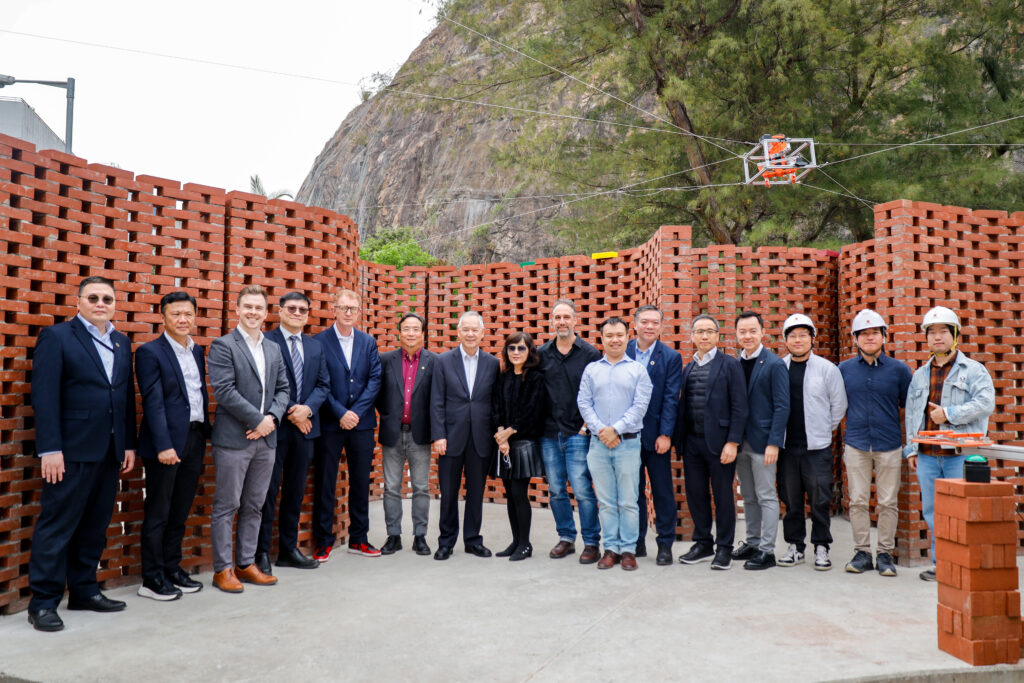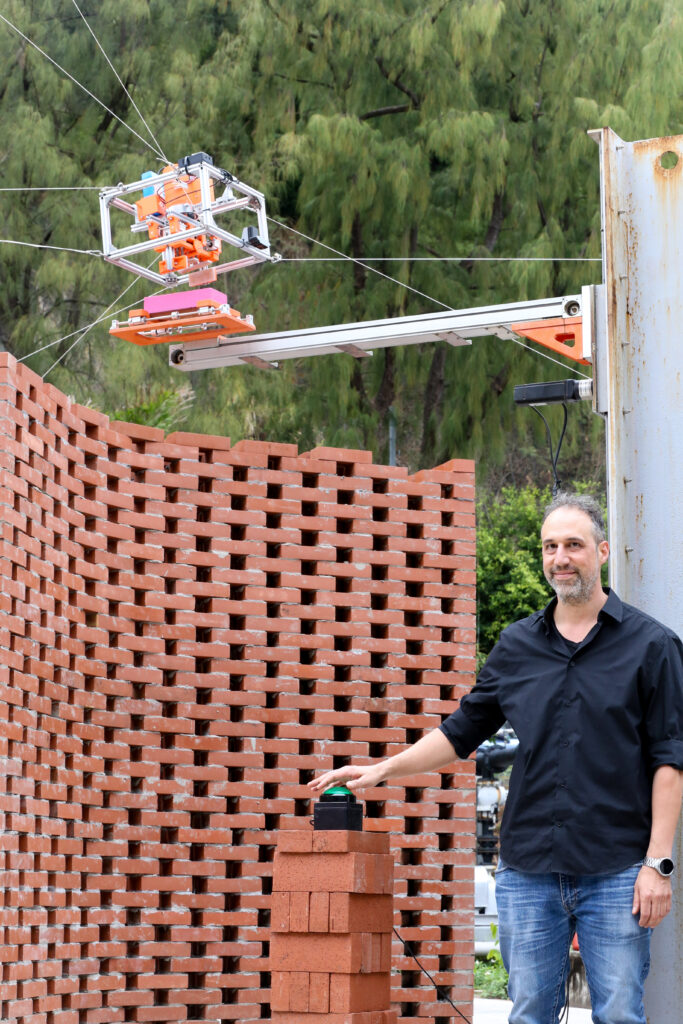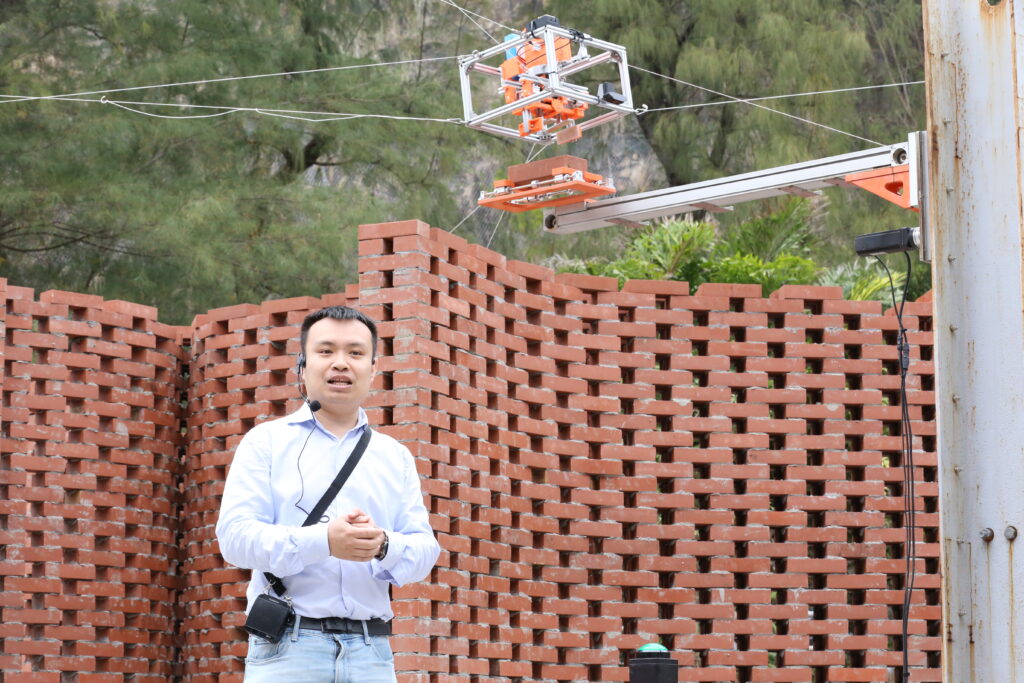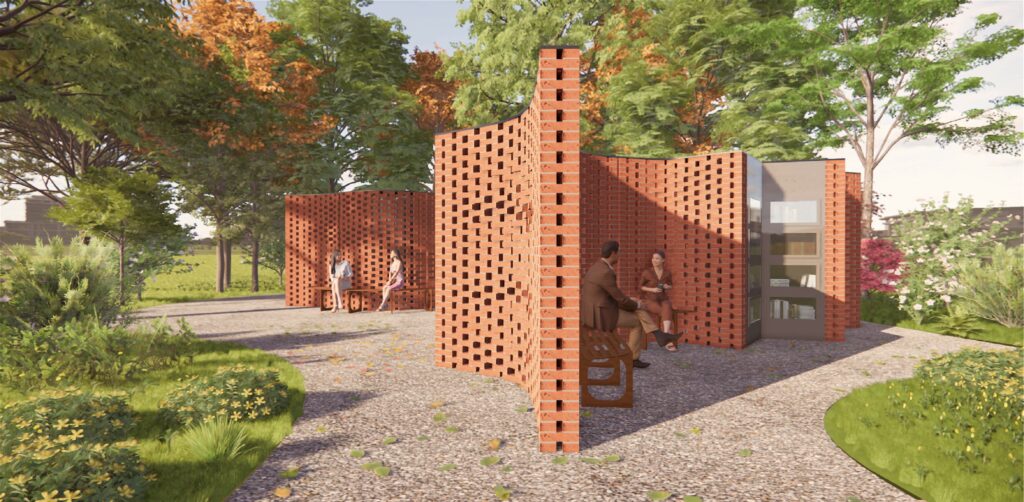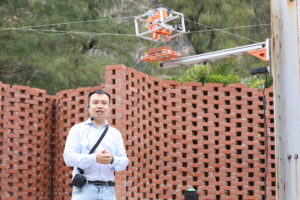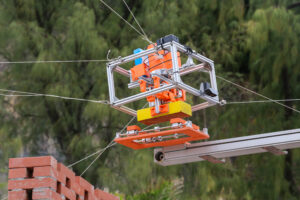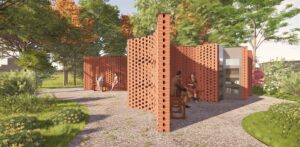CUHK
News Centre
CUHK holds topping-out ceremony of Yard for Environmental Sustainability
The Chinese University of Hong Kong (CUHK) recently held the topping-out ceremony of the Yard for Environmental Sustainability (YES). This project, located on the main campus near YC Liang Hall, is a collaboration among the Social Responsibility and Sustainable Development Office (SRSDO), the School of Architecture, the Department of Mechanical and Automation Engineering, and the Centre for Robotics in Construction and Architecture (CRCA) at CUHK. The construction of YES utilised the innovative technology CU-Brick, an automated, cable-driven robotic system. This marks the practical application of intelligent construction technology on campus and demonstrates the University’s commitment to building a sustainable campus.
Interdisciplinary collaboration for innovative architecture
Mr Adam Fingrut, Senior Lecturer from the School of Architecture, CU-Brick research partner and the lead designer of YES’s architectural structure, said: “The architectural structure of YES consists of complex, asymmetrical structures, integrating a streamlined design into CUHK’s hilly campus. This project was specifically designed to work with the CU-Brick system, enabling the team to carry out data-driven construction processes. This project is changing the way that architects work – by rethinking the role of data and computationally driven tools to advance traditional construction techniques and explore new design possibilities for our future environments.”
Professor Darwin Lau Tat-ming, Associate Professor in the Department of Mechanical and Automation Engineering and the developer of CU-Brick, said: “The CUHK team has applied CU-Brick to a local construction project for the first time with YES. Compared to traditional robotic arms, CU-Brick not only enables precise construction of complex structures but also operates effectively outdoors and in variable environments, bringing greater flexibility and efficiency to the construction industry. The team hopes to extend this technology to artistic architecture and complex structural projects, assisting architects in realising more creative designs and preserving diverse architectural craftsmanship.”
YES is expected to open in the second half of this year, providing CUHK students and staff with a shared space that integrates environmental education, recycling, low-carbon leisure, and community interaction, embodying the principles of sustainable development.
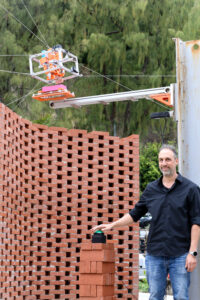
Adam Fingrut, Senior Lecturer from the School of Architecture, said that the project consists of complex, asymmetrical, geometric structures, aiming to integrate its streamlined design into CUHK’s hilly campus while embodying architectural inclusivity.


